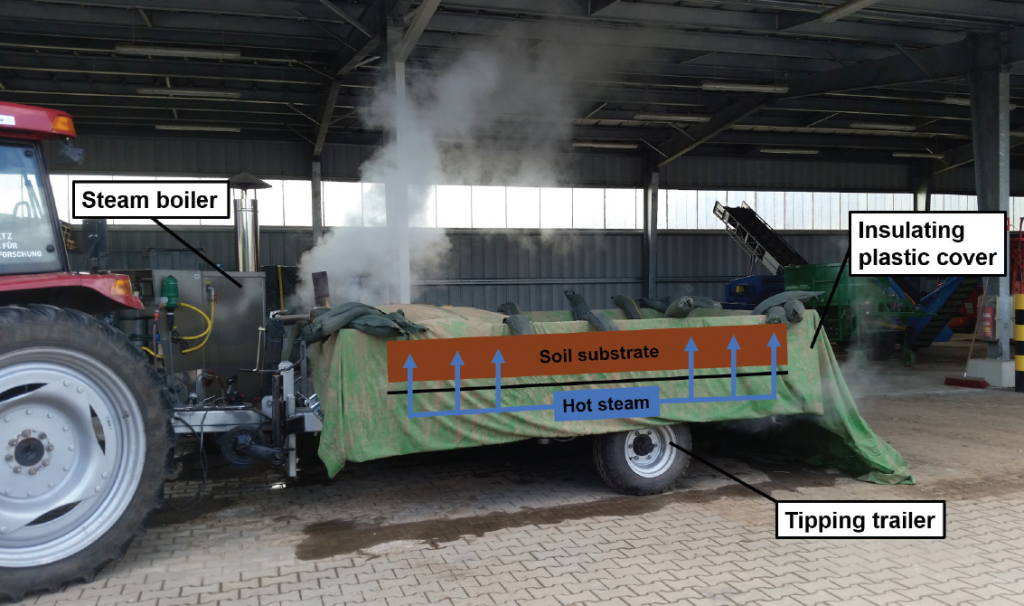New publication from Dietrich et al. in SOIL ORGANISMS: Effects of steam sterilization on soil abiotic and biotic properties
Abstract:
Experiments under natural conditions are becoming increasingly important to investigate the impacts of global change on biodiversity and ecosystem functioning, but field experiments are not always feasible. Climate or biodiversity chamber experiments can be an alternative, which, however, require large amounts of soil substrate. If only low amounts of target soil are available, high quantities of background soil must be sterilized and inoculated with target soil. One of the commonly used methods to sterilize large amounts of background soil is steam sterilization, because it is simple, fast and cheap. However, there is a lack of knowledge, whether steam sterilization is an effective method to completely eliminate all organisms in the soil (in particular heat-resistant organisms) as well as if and how it alters soil abiotic conditions like nutrient concentrations.

Therefore, we tested which organisms survived the sterilization treatment and if the effectiveness can be improved by repeated steam sterilization. Additionally, we checked whether steam sterilization changes soil pH, carbon and nutrient concentrations, and whether this is strengthened by a double sterilization treatment. To study this, we steam-sterilized 2 m3 sand-soil mix (1:4) for 150 min, stored it for 12 days at ambient temperature (for the germination of heat-resistant organisms) and repeated the sterilization procedure. We found a 27 % reduction in microbial biomass carbon after the first sterilization treatment and a 51 % reduction after the second sterilization treatment compared to untreated soil. Nematodes were almost completely eliminated (97 % after second treatment), while rotifers largely remained unchanged. Soil pH and plant-available phosphorus concentration increased after the first sterilization treatment (pH: from 7.44 to 7.79; phosphorus: +28 %). Phosphorus concentration increased further after the second sterilization treatment (+53 % compared to untreated soil), while pH remained unchanged (7.77). Plant-available potassium and total carbon concentrations decreased after the first treatment (potassium: -19 %; carbon: -5 %), while total carbon further decreased (-8 % compared to untreated soil) and potassium remained unchanged after the second treatment. Taken together, our study highlights that (single and double) steam-sterilization treatments were only partially effective, i.e. non-complete elimination of soil organisms, and additionally influenced soil properties. Nevertheless, steam sterilization is a fast and cost-effective alternative to other sterilization methods, especially when large amounts of soil substrate are needed. Therefore, if so, we recommend to use steam sterilization, but to sterilize the soil twice to significantly reduce the number of soil organisms, and further consider potential side effects, such as an increase in plant-available phosphorous concentration.
Reference:
Dietrich, P., Cesarz, S., Eisenhauer, N., & Roscher, C. (2020). Effects of steam sterilization on soil abiotic and biotic properties. SOIL ORGANISMS, 92(2), 99–108. https://doi.org/10.25674/so92iss2pp99



